Text

25-year-old Mary Shotwell Little worked as a secretary in a bank in Atlanta, Georgia. In August of 1965, she married Roy Little, a bank examiner. Just six weeks after their wedding day, Roy left town on a training course. On the afternoon of 14 October, Mary went grocery shopping, and that evening, she went to the Lennox Square Shopping Center for dinner with a co-worker at the Picadilly Cafeteria.
At around 8PM, she left the Lennox Square Shopping Center to her parked car, but was never seen again....
When Mary didn’t show up for work, she was reported missing. Initially, the security guard at the shopping center said he couldn’t find her car. However, later when police arrived, her 1965 Mercury Comet was found in the car park where she had left it. A coating of red dust was covering the car’s exterior. It looked as if it had been driven along a dirt road.
A stocking that had been cut with a knife was found on the floor of the car along with underwear. Specks of blood were found on the undergarments as well as the steering wheel and the handle. It was determined it was Mary’s blood. Some police theorised that due to the small amount of blood, it had been staged. However, there was an unidentified fingerprint in blood on the steering wheel of the vehicle.
An investigation uncovered that Mary’s credit card had been used twice in North Carolina the day after she disappeared. Both times, petrol had been purchased. The workers recollected seeing a woman who appeared to have blood on her head and legs. They recalled her being with two middle-aged men who appeared to be directing her what to do and what to say.
Investigators also discovered that Mary’s license plate was a North Carolina one that had been stolen as opposed to her Georgia one. Police believed that somebody abducted Mary and then moved her car back to the same parking spot afterwards.
Over the years there have been many theories as to what became of Mary. One of the more peculiar theories was that her disappearance was connected to lesbian sex scandal that was occurring at her place of her employment. It was also revealed that Mary had received alarming phone calls in the run up to her disappearance. These calls came to her work and her colleagues heard her telling the caller she was now a married woman that could no longer visit them.
Despite an exhaustive investigation, Mary Shotwell Little still remains missing today.
20 notes
·
View notes
Text

On the 14th of April 1984, a tragic discovery shook the shores of White Strand Beach in Cahirsiveen, County Kerry, Ireland—a newborn baby boy, discarded and brutally stabbed to death. The investigation that followed cast a spotlight on Joanne Hayes, a local woman who had recently been pregnant. Taken into police custody for questioning, Hayes reportedly confessed to the crime. However, she later recanted, asserting that her confession had been coerced.
Hayes admitted to giving birth to a baby son at the family farm, who tragically died shortly after birth. She confessed to burying him on the premises. Subsequent DNA testing on the buried infant corroborated Hayes' account—the DNA matched her story. The clandestine nature of the birth and death of her son stemmed from the fact that the father was a married man.
Despite the lack of a genetic match between the baby found on the beach and the one buried on the farm, indicating they did not share the same parents, police asserted that Hayes had conceived simultaneously by two different men—a phenomenon known as heteropaternal superfecundation, exceedingly rare but theoretically possible.
Hayes faced a murder charge, yet this accusation was ultimately dismissed by a judge. The infant found on the beach was christened "Baby John," yet his identity and the identity of his killer remain a mystery.
24 notes
·
View notes
Text

Lori Zimmerman from Hagerstown, Maryland, was just 15-years-old when she disappeared on the 6th of April, 1984. Since her parents divorce, Lori spent most of her time with her mother. They had just moved to their new home. In fact, Lori had only slept there one night before vanishing. On that fateful day, Lori got into a taxi to deliver her to Hagerstown High School. When she didn’t return that evening, her concerned mother reported her missing.
An investigation uncovered that Lori had arrived and left school safely that afternoon. She had caught the bus to stop at a nearby friend’s house for 10 minutes. This was the last time she was ever seen alive. The following week, Lori’s family received the grim news that she wouldn’t be coming home.
A couple were walking along Reno Monument Road when they stumbled across a gruesome scene. It was the partially clothed body of Lori. She had been beaten, strangled, and then hidden under cardboard and leaves. A foreign object had been shoved down her throat and all of her jewelry had been smashed. Police revealed that they didn’t believe Lori had been murdered at the location where her body was found.
The case remains unsolved.
25 notes
·
View notes
Text
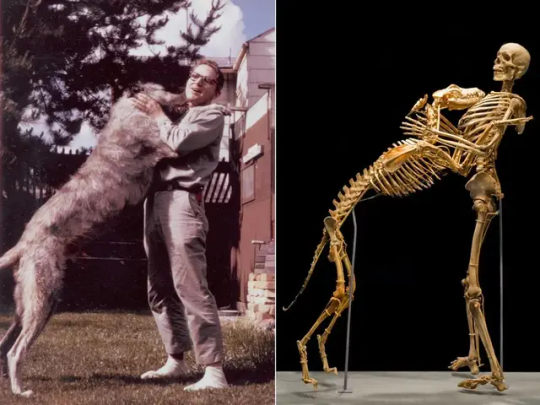
In 2002, anthropologist Grover Krantz made a unique arrangement for his final resting place: donating his body to the Smithsonian, with a heartfelt condition. Krantz insisted that his cherished Irish Wolfhound, Clyde, accompany him in death. True to his wishes, when Krantz's body was put on display in 2009, Clyde stood faithfully by his side for all to see.
1K notes
·
View notes
Text


15-year-old Karen Perez from Houston, Texas, had just recently celebrated her Quinceañera and had ambitions of one day working in a day care or animal shelter. She was kind and a good student who often spoke about her excitement of becoming a mother one day. “Her words were as soft as rose petals; she wouldn’t harm a fly,” recalled one of her friends.
On the 27th of May, 2016, however, Karen disappeared. After she was reported missing, a search party was assembled. Attending the search party was Karen’s 15-year-old boyfriend. As he and his father drove around searching, the teenage boy told his father to “just take him home because she is not alive…” His father immediately called the police.
Days later, members of the search party discovered Karen’s body in an abandoned building in the 1600 block of Avenue M, just across the street from South Houston High School. She had been strangled and then shoved into a cabinet under a sink.
Police immediately brought the boyfriend in for questioning and confiscated his phone as well as Karen’s phone. On his phone, police found text messages to Karen in which he demanded she skip school with him on the day she disappeared. When she said she couldn’t, he said he would kill her.
What investigators found on Karen's own cell pone was even more disturbing. She had captured the audio of her own murder. In the audio, her boyfriend was heard sexually assaulting Karen who exclaims “I don’t want to, I told you I don’t want to!” Afterwards, Karen was manually strangled by her boyfriend as she mumbled "I don’t want to die…“
The boyfriend was eventually identified as Jesus Campos Jr. He was convicted of Karen's murder and sentenced to life in prison.
56 notes
·
View notes
Text

Throughout the 1980s, David and Catherine Birnie committed a series of brutal sexual assaults and murders in Perth, Australia, targeting four women aged between 15 and 35. Most often, their victims were killed strangulation or stabbing.
However, the horror reached new depths in the case of 31-year-old Noelene Patterson, whom they imprisoned for days. Chained to a bed, she endured relentless sexual assaults until Catherine grew concerned about David's disturbing attachment to her. Catherine issued a chilling ultimatum: either David kill Noelene or Catherine would take her own life. David responded by forcing sleeping pills down Noelene’s throat before ultimately strangling her once she had lost consciousness.
Following the murders, the Birnies disposed of their victims' bodies, burying them in shallow graves within forests. Their reign of terror finally came to an end on November 10, 1986, when they abducted a 17-year-old, whose identity remains protected. She managed o escape from their home, fleeing naked down the road to seek help.
David leaded guilty to the crimes, stating it was "the least I could do." He took his own life in prison by hanging in his cell in 2005, just before facing further charges for sexually assaulting another inmate. Catherine, however, remains incarcerated and is serving a life sentence.
21 notes
·
View notes
Note
Have you seen the case of Bryan Benson and Seann Campbell? It's pretty interesting and still unsolved
I hadn’t but I’m looking at it now. What a horrific case. I might see if there’s enough information available and I’ll do an episode on my podcast on it.
6 notes
·
View notes
Text

The 1947 "doll test" was a experiment conducted by psychologists Kenneth and Mamie Clark, which played a significant role in the legal battle against segregation in the United States. The study aimed to investigate the psychological effects of segregation on African American children.
In the experiment, African American children aged between three and seven were shown two dolls. These dolls were identical except for their skin colour - one doll had white skin while the other had brown skin. The children were then asked a series of questions, including which doll they preferred, which one was the "nice" doll, and which one looked most like them.
The results of the study were startling and disturbing. The majority of the children, regardless of their own race, consistently showed a preference for the white doll over the brown one. Many attributed positive qualities to the white doll and negative qualities to the brown one. The doll test demonstrated that segregation not only deprived African American children of equal educational opportunities but also harmed their self-esteem and sense of identity.
The findings of the doll test provided evidence of the damaging psychological impact of segregation and racism on African American children. These results were instrumental in the landmark Supreme Court case Brown v. Board of Education (1954), which ruled that racial segregation in public schools was unconstitutional.
315 notes
·
View notes
Text

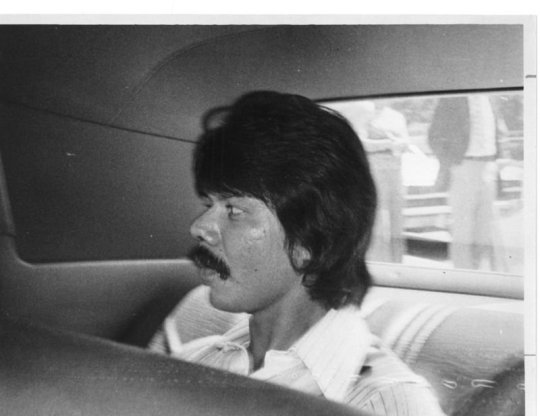
In the early hours of July 22nd, 1977, firefighters rushed to extinguish a blaze consuming a home in Prospect, Connecticut, near Route 68 and Cedar Hill Drive.
Amidst the charred remains, responders discovered the tragic fate of eight children and a woman. They were identified as Cheryl Beaudoin, 29, and her seven children—Frederick, 12, Sharon, 10, Debra, 9, Paul, 8, Roderick, 6, Holly, 5, and Mary, 4—the ninth victim was Cheryl's niece, Jennifer, 6.
But they hadn't died in the fire. Over at the medical examiner's office, it was discovered they had all been beaten to death with a tire iron, and then the fire was intentionally set. Cheryl had additionally been stabbed. At the time, her husband, Frederick Beaudoin, was away at his job in the Pratt & Whitney Aircraft Group factory in North Haven.
A massive investigative effort ensued, involving around 200 state police officers who meticulously pursued leads, questioning motorists and potential suspects, including family members. Among them, 27-year-old Lorne Acquin, Frederick's foster brother, drew immediate attention. With a criminal record including first-degree larceny, Lorne eventually confessed to the mass murder.
According to Lorne's account, he entered the home around 2AM via the cellar. Encountering Cheryl in the kitchen, he falsely claimed a need for tools, and she led him to her husband's tool box. Seizing a tire iron, Lorne savagely attacked Cheryl before proceeding to the children's bedrooms, binding some with shoelaces and then bludgeoning them all to death.
Lorne Acquin was convicted of multiple counts of murder and received a sentence of 25 years to life for each offense. Despite the confession, he never revealed a motivation.
35 notes
·
View notes
Text
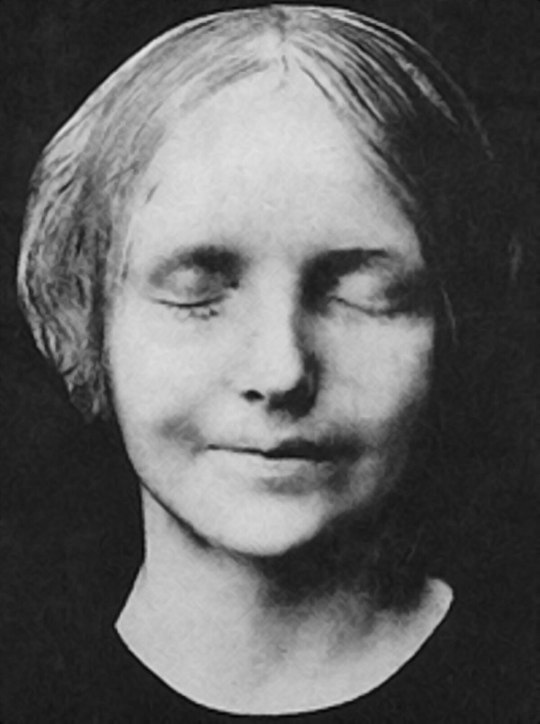
The tale of L'Inconnue de la Seine, or the Unknown Woman of the Seine, revolves around a death mask created from the face of a woman purportedly found in the 1800s, having allegedly taken her own life and retrieved from the Seine river near Quai du Louvre in Paris.
According to legend, the pathologist conducting her post-mortem was so struck by her beauty that he had a mask made to immortalize it. However, skepticism arose over the years due to the serene and flawless expression on the mask, leading some to speculate it was taken from a living model rather than a deceased body.
Despite the mystery surrounding her true identity, the visage of this woman became a popular decorative item, widely produced and adorning many homes in the early 1900s.
69 notes
·
View notes
Text
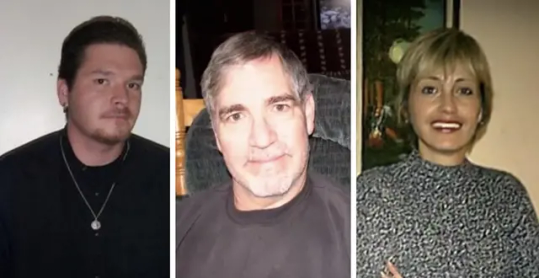

Kenneth Maxwell tragically lost his life while courageously attempting to respond to what he perceived as a crisis. On February 22nd, 2003, in Tulsa, Oklahoma, Kenneth spotted a raging house fire and promptly dialed 911 to report the emergency. However, during the call, the line abruptly went dead after another man's voice was heard in the background.
When firefighters arrived at the scene, they discovered Kenneth lying outside the burning house in a pool of blood, having been shot once in the head. Upon entering the residence, police uncovered the bodies of Rebecca Susan Barney and her ex-husband, Freddie Barney, both of whom had been fatally shot.
The killer had also stolen a computer but left everything else undisturbed, attempting to mask the true nature of the crime by setting the house ablaze. Detectives quickly established that after Kenneth spotted the blaze and approached the home to try and offer assistance, he encountered the killer outside and became another victim.
James Lynn Kidwell was swiftly apprehended for the murders. Investigations revealed that he had met Rebecca on a dating website and had been seen with both her and Freddie at a local bar prior to the murders. Despite Kidwell's denials of any sexual activity, forensic evidence, including semen and saliva matching Kidwell's, was found on Rebecca's body. Additionally, ammunition consistent with that used in the murders and a bloodstained t-shirt were discovered at Kidwell's residence.
Ultimately, James Lynn Kidwell was convicted and sentenced to three consecutive life terms.
18 notes
·
View notes
Note
Heyyy not sure if you’re still boosting others- I’ve been following you for years and years and love to see where you’re at nowadays, you worked so hard and deserve it all.
I started summing up true crime cases and the making of horror films in a nutshell over on tiktok and I love it so much, I really want to keep doing it. My name on there is theda.desmond.
Thanks for all you do! Will be following you til you call it quits.
Oh that’s so cool, I’ll go and give you a follow now 💖💖💖💖
4 notes
·
View notes
Text

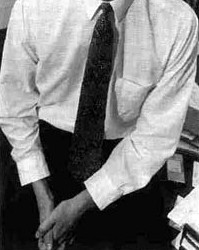
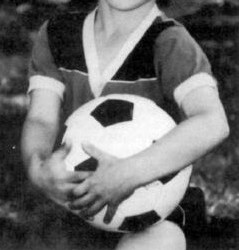
Laurie Dann led an unassuming childhood, growing up in an affluent northern suburb of Chicago. She was remembered as being somewhat awkward and lacking in confidence. It's believed that’s why she completely altered her face with plastic surgery at quite a young age.
She attended the University of Arizona for several years but never graduated. While working as a cocktail waitress at Green Acres Country Club, she met Russell Dann, the son of a wealthy family. The duo were inseparable and settled down and got married in September of 1982. They moved into a large mansion - something that had always been a dream of Laurie.
Shortly thereafter, Russell began to notice some bizarre quirks about his new wife. For example, she would keep her makeup in the microwave, would throw money into the back seat of her car, and would put clothes away while they were still soaking wet. While the couple remained together for several years, Laurie’s quirks began to worsen and worsen.
Eventually, she completely stopped leaving the house and refused to cook or clean up after herself. The relationship was doomed but it reached calamitous heights in September of 1986. Police received a phone call from Russell. Somebody had stabbed him with an ice-pick while he slept and he was certain it was Laurie. In fact, a store clerk would come forward to say Laurie had indeed purchased an ice-pick just days previously. The ice-pick missed his heart by just an inch.
Considering Russel was asleep and didn’t see his attacker, the charges against Laurie were dropped. The couple divorced shortly afterwards. As the divorce was underway, Laurie’s ex-boyfriend from five years previously started to receive threatening phone calls from Laurie in which she claimed she was pregnant with his child. The harassment finally ended when his lawyer contacted her parents.
Laurie moved from the marital home and decided she wanted to become a babysitter but this quickly failed when she was accused of stealing from her client’s homes and slashing up their sofas, rugs, and curtains. Following this failed business idea, she moved into a dorm room on the northwest campus. This too fell apart when Laurie starred to hide rotten meat inside furniture as well as hiding rubbish in other student’s rooms.
In January of 1988, she moved to a dorm in Madison, Wisconsin, where she became known as “elevator lady.” Students recalled her riding up and down in the elevator all day long. Once again, she started to leave rotten meat around the dorm and would often be seen stark naked in the communal areas. A month after moving in, a dorm room was set alight. Many believed Laurie had caused the fire intentionally but with no evidence, she was never charged.
By now, Laurie’s sanity had completely unraveled and nobody thought to get her more suitable professional help. After threatening a fellow student and slashing his clothing, Laurie baked buns and injected them with arsenic. She sent these laced treats to several frat houses and homes in the area before making her way to the home of a former babysitting client, asking if she could take their kids to the local fair. She gave the two children poisoned milk. Thankfully, they threw it out after saying it tasted strange. The arsenic in the laced treats she had sent out was so diluted that it caused no damage.
From here, Laurie went to a local daycare and tried to set it on fire before returning to the former clients home which she then set on fire. They were lucky enough to escape out of a smashed window. By the time the family escaped, Laurie was en route to Hubbard Woods Elementary School. Armed with two handguns, Laurie started shooting indiscriminately as soon as she entered the building. She shot and killed 8-year-old Nicholas Corwin before critically wounding another five.
Laurie ripped off the bloody shorts she was wearing and tied a plastic bag around her waist. After fleeing the school, she crashed her car into a tree and then broke into the home of Ruth and Phillip Andrews. Laurie held the terrified family hostage for six hours, claiming she had shot and killed her rapist and was now on the run from the police. Phillip grabbed the gun from Laurie as his family escaped. During the scuffle, he was shot in the chest but managed to stagger into the garden.
Alone in the Andrews home, Laurie shot herself dead.
26 notes
·
View notes
Text

In 1991, Isaac Wright Jr. was wrongfully convicted of being a drug kingpin in New Jersey and sentenced to life imprisonment. While behind bars, Wright educated himself on the law and became a prison paralegal; he assisted numerous inmates with their appeals. During his own appeal process, Wright served as his own lawyer. While conducting a cross-examination, Wright was able to extract a confession of police misconduct from veteran police detective, James Dugan, who confessed to a wide and systematic misconduct and cover-up.
Wright was subsequently released from prison. He obtained an undergraduate degree, graduated from St. Thomas University School of Law, passed the New Jersey Bar and was then granted admission to the bar. With his new status as a lawyer, Wright went after the men involved in the misconduct and cover-up. Dugan pleaded guilty to official misconduct and evaded prison time. The judge, Michael Imbriani was removed from the bench and sentenced to prison on theft charges. Somerset County Prosecutor took his own life after authorities attempted to arrest him.
141 notes
·
View notes
Text
youtube
Nestled in the heart of the picturesque Arkansas Delta, Jackson County is as an agricultural haven in the eastern expanse of the state. It was home to 25-year-old Sydney Sutherland.
On the afternoon of August 19th, 2020, Sydney left the home that she shared with her boyfriend, Alex, to go for a jog. It was something that she did most days. However, the hours passed and Sydney hadn't returned, prompting her family to report her missing.
As the investigation unfolded, it brought to the forefront the dangers that women face on a daily basis.
12 notes
·
View notes
Text


In the early morning hours of 1 March, 2008, the Caffey family were awoken by the sound of gunfire in their Alba, Texas, home. Two men, 19-year-old Charlie James Wilkinson and 20-year-old Charles Allen Waid, had broken into the home and began shooting and stabbing members of the family.
37-year-old Penny Caffrey and her two sons, 13-year-old Matthew and 8-year-old Tyler died in the attack but 41-year-old Terry Caffey, miraculously survived after being shot multiple times. Penny had been almost decapitated by a samurai sword while Matthew was shot dead and most disturbingly, Tyler was stabbed to death as he hid inside his closet. The attackers then set the house on fire.
Terry was able to identify the two men who systematically brutally slaughtered his family as the boyfriend and friend of his his 16-year-old daughter, Erin Caffey. It was uncovered that Erin had been the mastermind behind the savage attack due to her parents forbidding her from seeing Charlie, who they believed to be a bad influence. Erin sat outside in the car as Charlie and Charles murdered her family.
Both men received life imprisonment while Erin accepted a plea deal in which she could be released from prison on good behavior when she is 59-years-old. Despite her actions, her father has stood by her side and visits her in prison weekly.
18 notes
·
View notes
Text
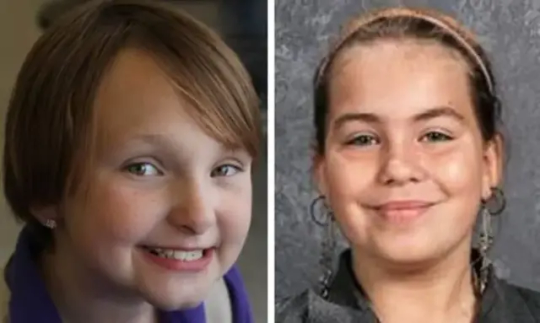
It was the 13th of July, 2012, when cousins, 8-year-old Elizabeth Collins and 10-year-old Lyric Cook, set off from Elizabeth’s home in Evansdale, Iowa, on their bicycles. Quite often, Lyric would go to Elizabeth’s home for the day while her mother went to work. That afternoon, they were being cared for by their grandmother, Wilma Cook.
The girls never returned home. Their families would search around the area for approximately on hour before calling police and reporting them missing.
A search party would be assembled as police tried to retrace the girls last known movements. Hundreds of concerned locals would participate in the search and police would quickly discover that last reported sighting of the girls was from around noon, when they were spotted in downtown Evansdale.
Their bicycles were found along the bike trail on the southeast corner of Meyers Lake. Police would send a boat into the waters of the lake, searching for any evidence of the girls.
They would send divers into the lake and then drag it but there was nothing found inside the water which could indicate what happened to Elizabeth and Lyric.
However, around 20 feet away from where the bicycles had been found, police would find Elizabeth’s purse and cellphone.
𝐑𝐞𝐚𝐝 𝐌𝐨𝐫𝐞:
17 notes
·
View notes